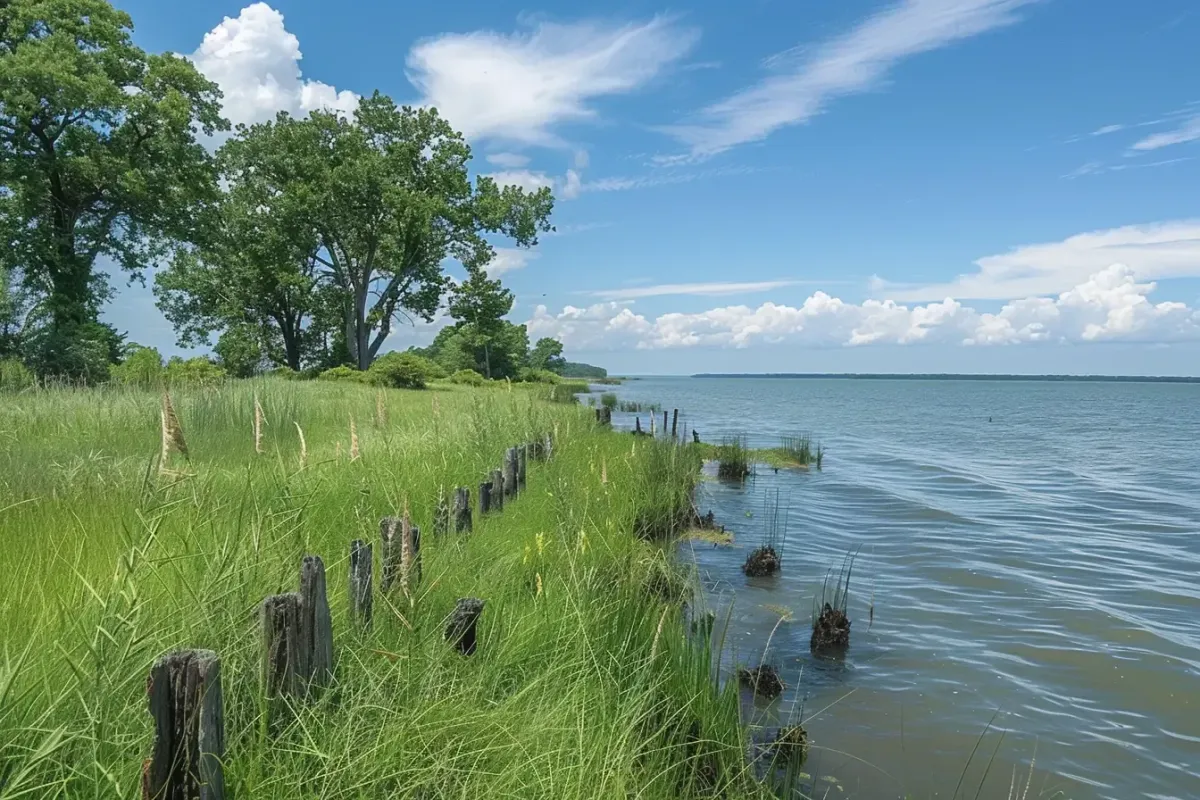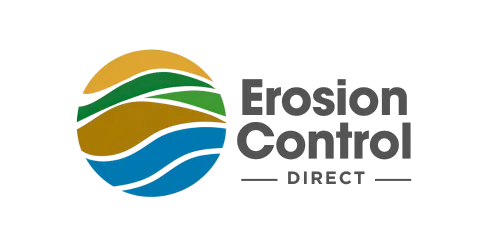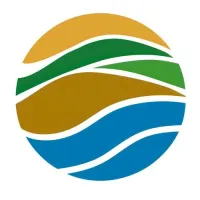By calling this number, you consent to receive a follow-up text message from Erosion Control Direct if the call is missed
By calling this number, you consent to receive a follow-up text message from Erosion Control Direct if the call is missed
The Erosion Control Direct Blog
Where Expertise Meets Innovation in Erosion Management
The Erosion Control Direct Blog
Where Expertise Meets Innovation in Erosion Management
Featured Insights
From the Experts: Navigating the Landscape of Erosion Control

Breaking Ground: 5 Innovative Erosion Control Solutions Revolutionizing the Industry
As our understanding of environmental processes and technological capabilities continue to advance, the field of erosion control is experiencing a revolution. New and innovative erosion control products are emerging that promise more effective, efficient, and environmentally-friendly solutions to age-old problems. This article explores five cutting-edge erosion control solutions that are transforming the industry and shaping the future of land management.
1. Smart Erosion Monitoring Systems
One of the most exciting developments in erosion control is the integration of smart technology and data analytics. Smart erosion monitoring systems use a network of sensors to collect real-time data on soil conditions, weather patterns, and erosion rates. This data is then analyzed using advanced algorithms to predict erosion risks and optimize control measures.
Key features of smart erosion monitoring systems include:
Real-time data collection on soil moisture, temperature, and movement
Weather forecasting integration for proactive erosion prevention
Automated alerts for high-risk conditions
Data visualization tools for easy interpretation and decision-making
2. Bioengineered Erosion Control Solutions
Bioengineering techniques combine living plants with structural elements to create natural, sustainable erosion control solutions. These methods not only prevent erosion but also enhance biodiversity and improve aesthetic value.
Examples of bioengineered solutions include:
Live stake installations
Brush layering
Vegetated gabions
Root wads
The benefits of bioengineered solutions extend beyond erosion control. They can also:
Improve water quality by filtering pollutants
Provide habitat for wildlife
Enhance carbon sequestration
Increase property values through improved aesthetics
3. Advanced Geosynthetics
Geosynthetics have long been a staple in erosion control, but recent advancements have led to more effective and versatile products. New geosynthetic materials offer improved strength, durability, and environmental compatibility.
Innovative geosynthetic products include:
High-performance turf reinforcement mats (HPTRMs)
Biodegradable erosion control blankets
Multifunctional geotextiles with built-in sensors
These advanced geosynthetics are particularly effective for coastal erosion prevention, offering robust protection against wave action and storm surges.
4. 3D-Printed Erosion Control Structures
3D printing technology is making waves in the erosion control industry, allowing for the creation of custom-designed structures that perfectly fit the unique contours of a site. These structures can be printed using eco-friendly materials, further enhancing their sustainability credentials.
Advantages of 3D-printed erosion control structures include:
Customized designs for optimal performance
Reduced material waste
Faster installation times
Potential for using recycled materials in printing
5. Nanotechnology-Enhanced Erosion Control Materials
Nanotechnology is being applied to develop erosion control materials with enhanced properties at the molecular level. These materials offer superior performance in terms of strength, durability, and effectiveness.
Applications of nanotechnology in erosion control include:
Nanoparticle-enhanced soil stabilizers
Self-healing geotextiles
Nano-coated erosion control blankets with improved water retention
The potential of nanotechnology in erosion control is vast, with ongoing research promising even more innovative solutions in the future.
Comparative Analysis of Innovative Erosion Control Solutions
To help you understand the relative strengths and applications of these innovative solutions, consider the following comparison table:
Implementation Considerations
While these innovative solutions offer exciting possibilities, it’s important to consider several factors when implementing them:
Site-specific requirements: Each site has unique characteristics that will influence the choice of erosion control solution.
Regulatory compliance: Ensure that any new technology meets local, state, and federal regulations.
Cost-benefit analysis: While some solutions may have higher upfront costs, they may offer significant long-term savings.
Environmental impact: Consider both short-term and long-term environmental effects of the chosen solution.
Maintenance requirements: Some innovative solutions may require specialized maintenance or monitoring.
The Future of Erosion Control
As we look to the future, it’s clear that erosion control will continue to evolve, driven by technological advancements and a growing emphasis on sustainability. The integration of artificial intelligence, machine learning, and Internet of Things (IoT) technologies promises to make erosion control more precise, efficient, and effective than ever before.
Dr. Tim G. Frazier, Full Professor and Faculty Director of the Emergency and Disaster Management program at Georgetown University, emphasizes the importance of innovative approaches in environmental management:
“As we face increasing environmental challenges, it’s crucial that we develop and implement innovative solutions. In the field of erosion control, these new technologies and approaches can significantly enhance our ability to protect landscapes and infrastructure.”
Dr. Alan D. Thornhill, an ecologist and evolutionary biologist with over two decades of experience in academic research and environmental management, offers insights on the ecological implications of innovative erosion control:
“The integration of ecological principles with new technologies in erosion control is a promising development. These innovative solutions not only prevent erosion but can also contribute to ecosystem health and resilience.”
As these innovations continue to develop, it’s crucial for erosion control professionals to stay informed about the latest advancements and erosion control best practices. By embracing these new technologies and approaches, we can more effectively protect our landscapes, infrastructure, and natural resources from the damaging effects of erosion.
Conclusion
The field of erosion control is undergoing a remarkable transformation, driven by technological innovation and a deepening understanding of natural processes. From smart monitoring systems to bioengineered solutions, advanced geosynthetics to 3D-printed structures, and nanotechnology-enhanced materials, these innovative approaches are reshaping how we tackle erosion challenges.
As we continue to face increasing environmental pressures and the effects of climate change, these innovative solutions will play a crucial role in protecting our landscapes and infrastructure. By staying informed about these advancements and carefully considering their application, erosion control professionals can ensure they’re using the most effective and sustainable methods available.
The future of erosion control is bright, promising more efficient, effective, and environmentally-friendly solutions. As we break new ground in erosion control technology, we’re not just protecting the land – we’re paving the way for a more sustainable and resilient future.
Q&A
Q: What are some innovative erosion control methods?
A: Innovative erosion control methods include smart erosion monitoring systems, bioengineered solutions, advanced geosynthetics, 3D-printed erosion control structures, and nanotechnology-enhanced materials.
Q: How does technology help in erosion control?
A: Technology helps in erosion control through real-time monitoring, predictive analytics, custom-designed solutions, and enhanced material properties. Examples include smart sensor networks, 3D printing, and nanotechnology applications.
Q: What is bioengineering in erosion control?
A: Bioengineering in erosion control involves using living plants in combination with structural elements to prevent erosion. Techniques include live staking, brush layering, and vegetated gabions.
Q: How effective are geotextiles in erosion control?
A: Geotextiles are highly effective in erosion control. They stabilize soil, filter sediment, and promote vegetation growth. Advanced geotextiles offer improved strength, durability, and even smart capabilities.
Q: What role does 3D printing play in erosion control?
A: 3D printing allows for the creation of custom-designed erosion control structures that fit perfectly to a site’s unique contours. This technology offers improved efficiency, reduced waste, and the potential for using eco-friendly materials.
Q: How is nanotechnology used in erosion control?
A: Nanotechnology is used to enhance erosion control materials at the molecular level, improving properties like strength, durability, and water retention. Applications include nanoparticle-enhanced soil stabilizers and self-healing geotextiles.
Q: What are smart erosion monitoring systems?
A: Smart erosion monitoring systems use sensors and data analytics to collect real-time information on soil conditions, weather patterns, and erosion rates. This data is used to predict erosion risks and optimize control measures.
Q: How do innovative erosion control methods compare to traditional ones?
A: Innovative methods often offer improved effectiveness, efficiency, and environmental compatibility compared to traditional methods. However, they may have higher initial costs and require specialized knowledge to implement.
Q: What environmental benefits do innovative erosion control solutions offer?
A: Many innovative solutions offer environmental benefits such as improved biodiversity, enhanced water quality, increased carbon sequestration, and reduced material waste.
Q: How can I choose the right innovative erosion control solution for my project?
A: Choosing the right solution depends on factors like site characteristics, project scale, budget, regulatory requirements, and long-term maintenance considerations. It’s often beneficial to consult with erosion control experts to determine the best approach.
Get Expert Erosion Control Solutions
Implementing the right erosion control solutions is crucial for protecting your property and the environment. At Erosion Control Direct, we’re committed to providing you with top-quality products and expert advice to address your specific erosion control needs. For personalized assistance and product recommendations, don’t hesitate to reach out:
• Call us at (888) 920-5005 to speak with one of our erosion control experts.
• Visit our website at https://erosioncontroldirect.com to browse our product range or submit an online inquiry.
• For detailed quotations, email us at [email protected].
Let us help you find the perfect erosion control solution for your project. Contact Erosion Control Direct today and take the first step towards effective soil stabilization and environmental protection.

Breaking Ground: 5 Innovative Erosion Control Solutions Revolutionizing the Industry
As our understanding of environmental processes and technological capabilities continue to advance, the field of erosion control is experiencing a revolution. New and innovative erosion control products are emerging that promise more effective, efficient, and environmentally-friendly solutions to age-old problems. This article explores five cutting-edge erosion control solutions that are transforming the industry and shaping the future of land management.
1. Smart Erosion Monitoring Systems
One of the most exciting developments in erosion control is the integration of smart technology and data analytics. Smart erosion monitoring systems use a network of sensors to collect real-time data on soil conditions, weather patterns, and erosion rates. This data is then analyzed using advanced algorithms to predict erosion risks and optimize control measures.
Key features of smart erosion monitoring systems include:
Real-time data collection on soil moisture, temperature, and movement
Weather forecasting integration for proactive erosion prevention
Automated alerts for high-risk conditions
Data visualization tools for easy interpretation and decision-making
2. Bioengineered Erosion Control Solutions
Bioengineering techniques combine living plants with structural elements to create natural, sustainable erosion control solutions. These methods not only prevent erosion but also enhance biodiversity and improve aesthetic value.
Examples of bioengineered solutions include:
Live stake installations
Brush layering
Vegetated gabions
Root wads
The benefits of bioengineered solutions extend beyond erosion control. They can also:
Improve water quality by filtering pollutants
Provide habitat for wildlife
Enhance carbon sequestration
Increase property values through improved aesthetics
3. Advanced Geosynthetics
Geosynthetics have long been a staple in erosion control, but recent advancements have led to more effective and versatile products. New geosynthetic materials offer improved strength, durability, and environmental compatibility.
Innovative geosynthetic products include:
High-performance turf reinforcement mats (HPTRMs)
Biodegradable erosion control blankets
Multifunctional geotextiles with built-in sensors
These advanced geosynthetics are particularly effective for coastal erosion prevention, offering robust protection against wave action and storm surges.
4. 3D-Printed Erosion Control Structures
3D printing technology is making waves in the erosion control industry, allowing for the creation of custom-designed structures that perfectly fit the unique contours of a site. These structures can be printed using eco-friendly materials, further enhancing their sustainability credentials.
Advantages of 3D-printed erosion control structures include:
Customized designs for optimal performance
Reduced material waste
Faster installation times
Potential for using recycled materials in printing
5. Nanotechnology-Enhanced Erosion Control Materials
Nanotechnology is being applied to develop erosion control materials with enhanced properties at the molecular level. These materials offer superior performance in terms of strength, durability, and effectiveness.
Applications of nanotechnology in erosion control include:
Nanoparticle-enhanced soil stabilizers
Self-healing geotextiles
Nano-coated erosion control blankets with improved water retention
The potential of nanotechnology in erosion control is vast, with ongoing research promising even more innovative solutions in the future.
Comparative Analysis of Innovative Erosion Control Solutions
To help you understand the relative strengths and applications of these innovative solutions, consider the following comparison table:
Implementation Considerations
While these innovative solutions offer exciting possibilities, it’s important to consider several factors when implementing them:
Site-specific requirements: Each site has unique characteristics that will influence the choice of erosion control solution.
Regulatory compliance: Ensure that any new technology meets local, state, and federal regulations.
Cost-benefit analysis: While some solutions may have higher upfront costs, they may offer significant long-term savings.
Environmental impact: Consider both short-term and long-term environmental effects of the chosen solution.
Maintenance requirements: Some innovative solutions may require specialized maintenance or monitoring.
The Future of Erosion Control
As we look to the future, it’s clear that erosion control will continue to evolve, driven by technological advancements and a growing emphasis on sustainability. The integration of artificial intelligence, machine learning, and Internet of Things (IoT) technologies promises to make erosion control more precise, efficient, and effective than ever before.
Dr. Tim G. Frazier, Full Professor and Faculty Director of the Emergency and Disaster Management program at Georgetown University, emphasizes the importance of innovative approaches in environmental management:
“As we face increasing environmental challenges, it’s crucial that we develop and implement innovative solutions. In the field of erosion control, these new technologies and approaches can significantly enhance our ability to protect landscapes and infrastructure.”
Dr. Alan D. Thornhill, an ecologist and evolutionary biologist with over two decades of experience in academic research and environmental management, offers insights on the ecological implications of innovative erosion control:
“The integration of ecological principles with new technologies in erosion control is a promising development. These innovative solutions not only prevent erosion but can also contribute to ecosystem health and resilience.”
As these innovations continue to develop, it’s crucial for erosion control professionals to stay informed about the latest advancements and erosion control best practices. By embracing these new technologies and approaches, we can more effectively protect our landscapes, infrastructure, and natural resources from the damaging effects of erosion.
Conclusion
The field of erosion control is undergoing a remarkable transformation, driven by technological innovation and a deepening understanding of natural processes. From smart monitoring systems to bioengineered solutions, advanced geosynthetics to 3D-printed structures, and nanotechnology-enhanced materials, these innovative approaches are reshaping how we tackle erosion challenges.
As we continue to face increasing environmental pressures and the effects of climate change, these innovative solutions will play a crucial role in protecting our landscapes and infrastructure. By staying informed about these advancements and carefully considering their application, erosion control professionals can ensure they’re using the most effective and sustainable methods available.
The future of erosion control is bright, promising more efficient, effective, and environmentally-friendly solutions. As we break new ground in erosion control technology, we’re not just protecting the land – we’re paving the way for a more sustainable and resilient future.
Q&A
Q: What are some innovative erosion control methods?
A: Innovative erosion control methods include smart erosion monitoring systems, bioengineered solutions, advanced geosynthetics, 3D-printed erosion control structures, and nanotechnology-enhanced materials.
Q: How does technology help in erosion control?
A: Technology helps in erosion control through real-time monitoring, predictive analytics, custom-designed solutions, and enhanced material properties. Examples include smart sensor networks, 3D printing, and nanotechnology applications.
Q: What is bioengineering in erosion control?
A: Bioengineering in erosion control involves using living plants in combination with structural elements to prevent erosion. Techniques include live staking, brush layering, and vegetated gabions.
Q: How effective are geotextiles in erosion control?
A: Geotextiles are highly effective in erosion control. They stabilize soil, filter sediment, and promote vegetation growth. Advanced geotextiles offer improved strength, durability, and even smart capabilities.
Q: What role does 3D printing play in erosion control?
A: 3D printing allows for the creation of custom-designed erosion control structures that fit perfectly to a site’s unique contours. This technology offers improved efficiency, reduced waste, and the potential for using eco-friendly materials.
Q: How is nanotechnology used in erosion control?
A: Nanotechnology is used to enhance erosion control materials at the molecular level, improving properties like strength, durability, and water retention. Applications include nanoparticle-enhanced soil stabilizers and self-healing geotextiles.
Q: What are smart erosion monitoring systems?
A: Smart erosion monitoring systems use sensors and data analytics to collect real-time information on soil conditions, weather patterns, and erosion rates. This data is used to predict erosion risks and optimize control measures.
Q: How do innovative erosion control methods compare to traditional ones?
A: Innovative methods often offer improved effectiveness, efficiency, and environmental compatibility compared to traditional methods. However, they may have higher initial costs and require specialized knowledge to implement.
Q: What environmental benefits do innovative erosion control solutions offer?
A: Many innovative solutions offer environmental benefits such as improved biodiversity, enhanced water quality, increased carbon sequestration, and reduced material waste.
Q: How can I choose the right innovative erosion control solution for my project?
A: Choosing the right solution depends on factors like site characteristics, project scale, budget, regulatory requirements, and long-term maintenance considerations. It’s often beneficial to consult with erosion control experts to determine the best approach.
Get Expert Erosion Control Solutions
Implementing the right erosion control solutions is crucial for protecting your property and the environment. At Erosion Control Direct, we’re committed to providing you with top-quality products and expert advice to address your specific erosion control needs. For personalized assistance and product recommendations, don’t hesitate to reach out:
• Call us at (888) 920-5005 to speak with one of our erosion control experts.
• Visit our website at https://erosioncontroldirect.com to browse our product range or submit an online inquiry.
• For detailed quotations, email us at [email protected].
Let us help you find the perfect erosion control solution for your project. Contact Erosion Control Direct today and take the first step towards effective soil stabilization and environmental protection.


Facebook